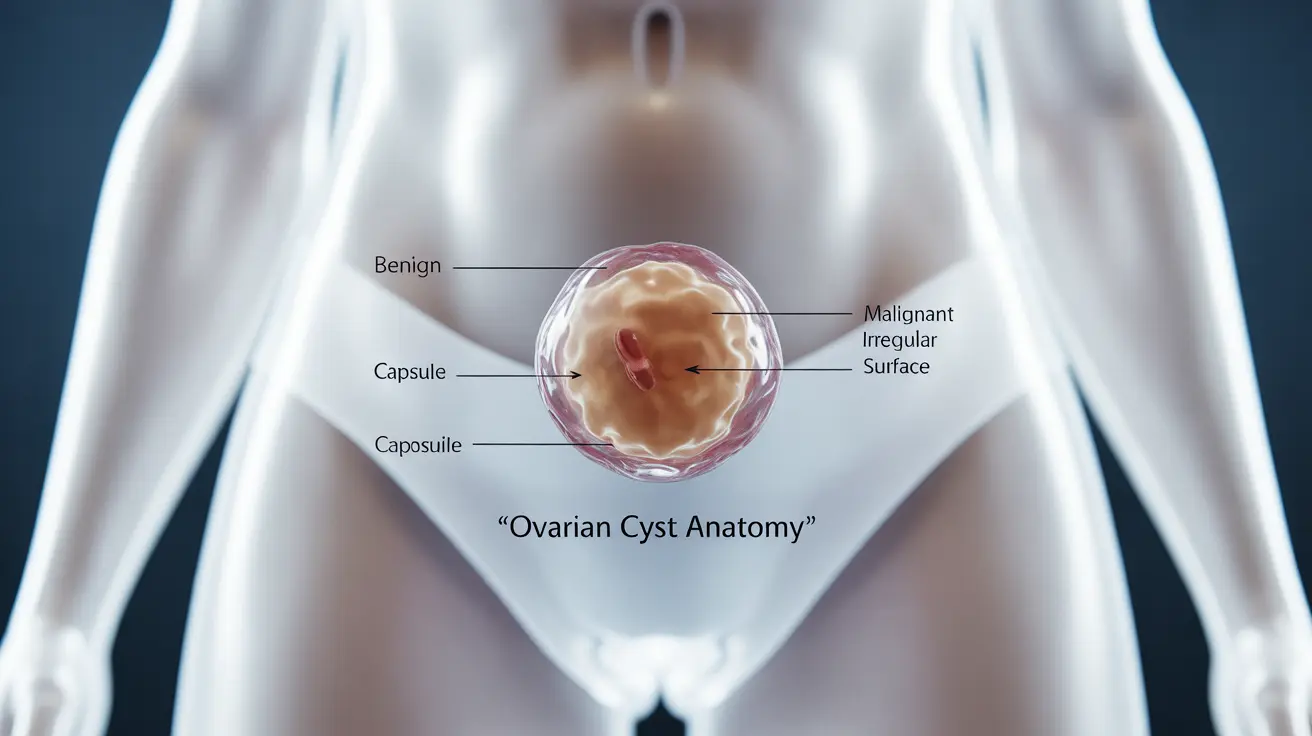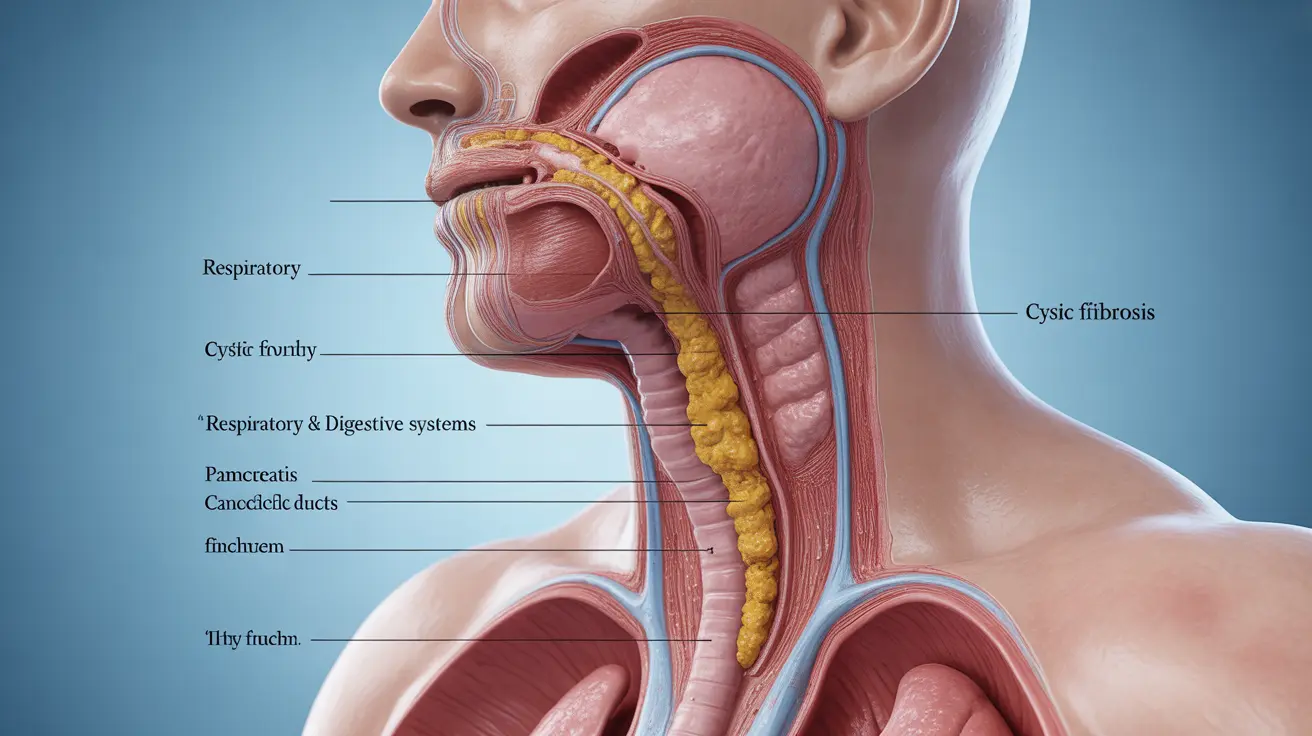When an ovarian cyst is discovered, one of the most pressing concerns is whether it could be malignant (cancerous). While most ovarian cysts are benign and resolve on their own, understanding the characteristics of malignant ovarian cysts is crucial for early detection and proper treatment.
This comprehensive guide will help you understand the key differences between benign and malignant ovarian cysts, including warning signs, diagnostic procedures, and available treatment options.
Key Signs and Symptoms of Malignant Ovarian Cysts
Malignant ovarian cysts often present symptoms that differ from benign cysts in their persistence and severity. Common warning signs include:
- Persistent pelvic or abdominal pain that doesn't follow menstrual cycles
- Unexplained weight loss
- Feeling full quickly when eating
- Bloating or increased abdominal size
- Changes in bowel habits or urinary frequency
- Unusual vaginal bleeding
While these symptoms can also occur with benign conditions, their persistence beyond a few weeks warrants medical attention.
Diagnostic Procedures for Ovarian Cysts
Initial Screening Methods
Healthcare providers typically begin with these diagnostic tools:
- Pelvic examination
- Transvaginal ultrasound
- Blood tests, including CA-125 levels
- Complete medical history review
Advanced Diagnostic Testing
If initial screening suggests potential malignancy, doctors may recommend:
- CT scans or MRI imaging
- Diagnostic laparoscopy
- Tissue biopsy
- Additional tumor marker tests
Risk Factors for Malignant Ovarian Cysts
Several factors can increase the likelihood of an ovarian cyst being cancerous:
- Age (particularly post-menopausal women)
- Family history of ovarian or breast cancer
- Genetic mutations (BRCA1 or BRCA2)
- Previous history of cancer
- Never having been pregnant
- Endometriosis
- Obesity
Treatment Approaches for Malignant Ovarian Cysts
Surgical Options
The primary treatment for malignant ovarian cysts typically involves surgery:
- Complete removal of the affected ovary (oophorectomy)
- Removal of both ovaries and fallopian tubes
- Hysterectomy if necessary
- Surgical staging to check for cancer spread
Additional Treatments
Following surgery, additional treatments may include:
- Chemotherapy
- Targeted therapy
- Radiation therapy (less common)
- Clinical trials for new treatment options
Monitoring and Follow-up Care
After treatment, regular monitoring is essential and typically includes:
- Regular physical examinations
- Blood tests for tumor markers
- Imaging studies
- Symptom monitoring
- Regular follow-up appointments
Frequently Asked Questions
What are the common symptoms that might indicate a malignant ovarian cyst versus a benign ovarian cyst? Malignant ovarian cysts typically cause more persistent and severe symptoms, including constant pelvic pain, rapid abdominal swelling, unexplained weight loss, and changes in bowel or bladder habits. Unlike benign cysts, these symptoms don't typically correlate with menstrual cycles.
How are malignant ovarian cysts diagnosed and what tests can distinguish them from benign cysts? Diagnosis involves multiple steps, including transvaginal ultrasound, blood tests for tumor markers (especially CA-125), CT scans or MRI imaging, and possibly a tissue biopsy. The combination of these tests helps doctors differentiate between benign and malignant cysts.
What risk factors increase the likelihood of an ovarian cyst being cancerous? Key risk factors include advanced age (especially post-menopause), family history of ovarian or breast cancer, BRCA gene mutations, never having been pregnant, and conditions like endometriosis. Obesity and certain hormonal factors may also increase risk.
What treatment options are available if an ovarian cyst is found to be malignant? Treatment typically involves surgery to remove the affected tissue, which may include removing one or both ovaries, fallopian tubes, and possibly the uterus. Additional treatments often include chemotherapy, and sometimes targeted therapy or radiation, depending on the specific case.
When should someone with ovarian cyst symptoms see a doctor for early detection of ovarian cancer? Anyone experiencing persistent pelvic pain, unusual bloating, changes in appetite, frequent urination, or unexplained weight loss should seek medical attention, especially if symptoms last more than two weeks. Immediate medical attention is needed for severe pelvic pain or symptoms accompanied by fever.




